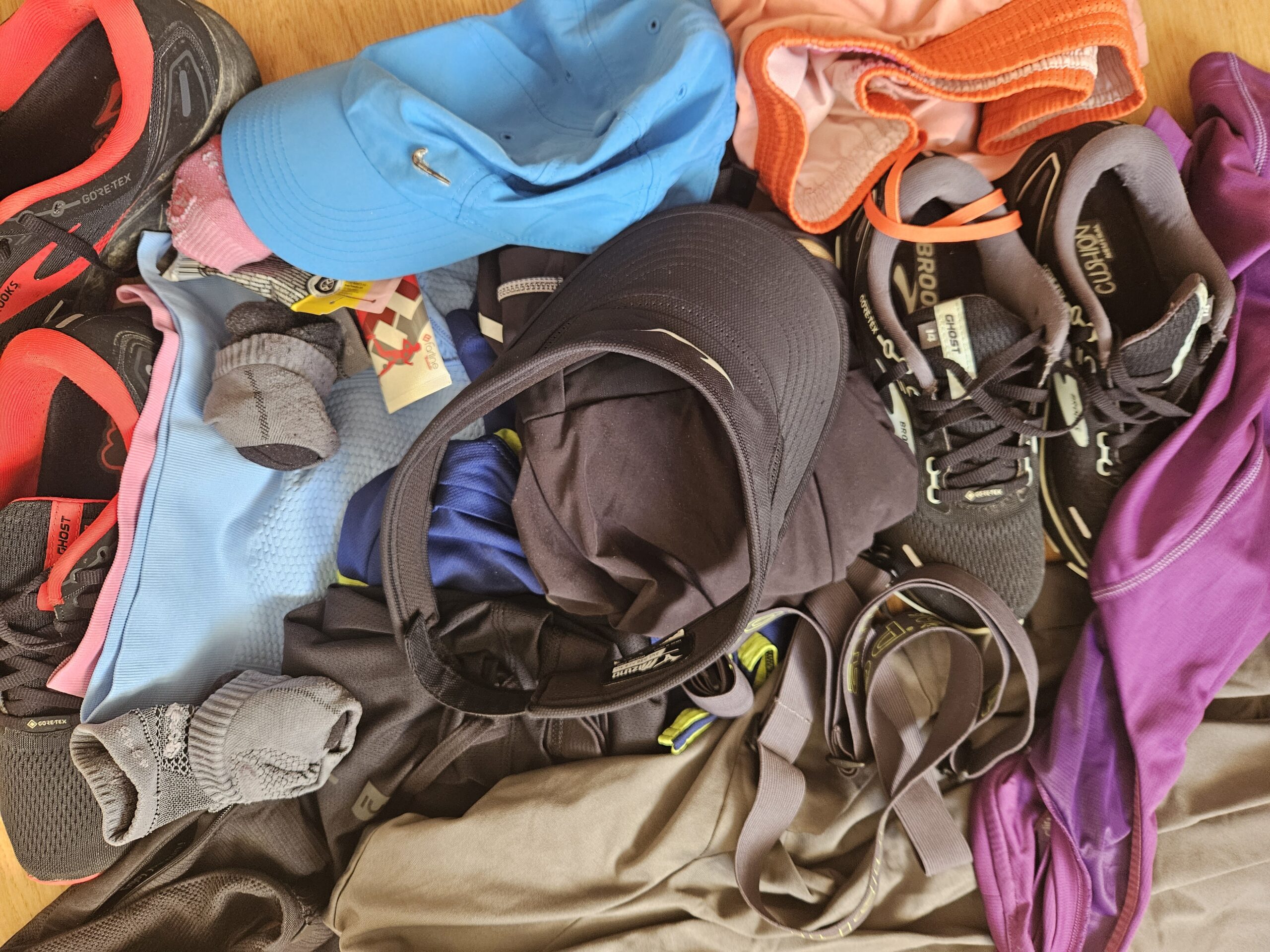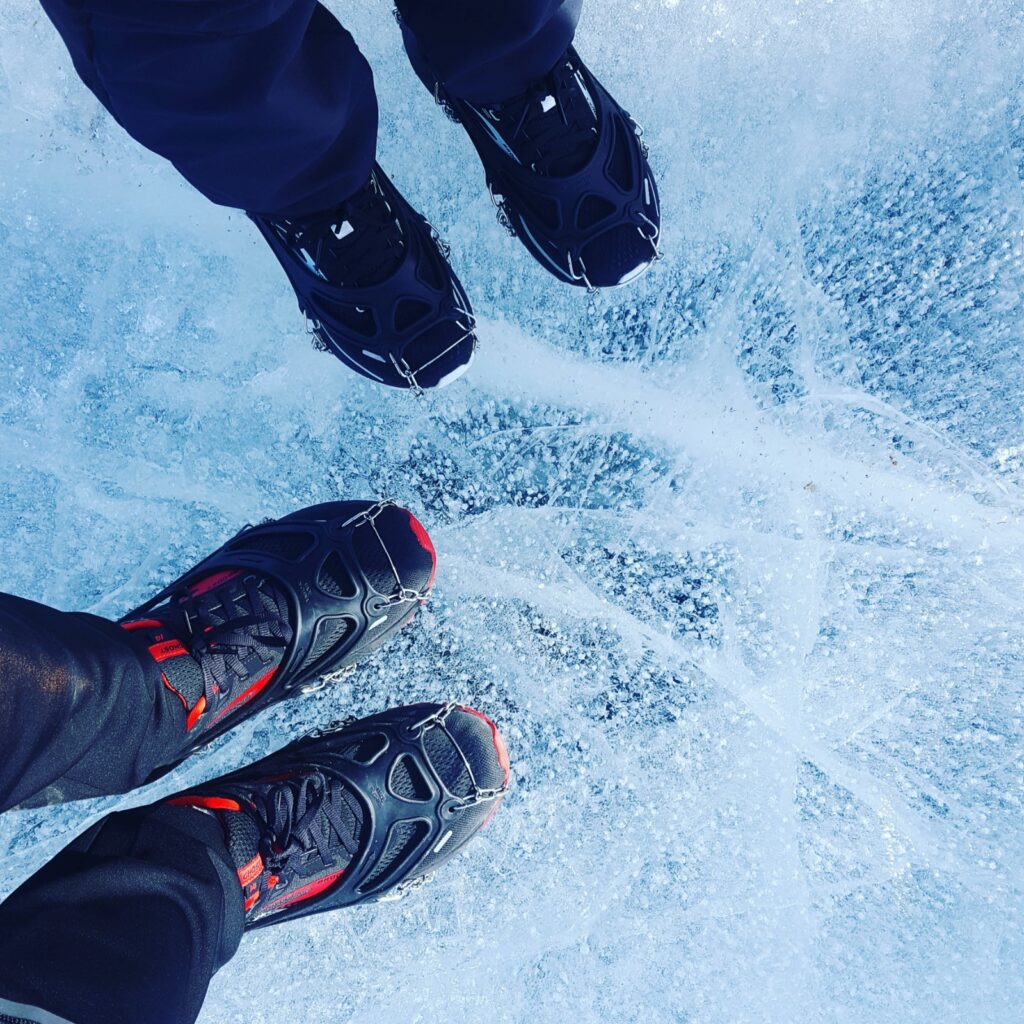
Bundle up!
Running in freezing temperatures 🧊 requires smart gear 👟. The right setup keeps you warm, dry, visible—and helps you perform at your best. Something I painfully learnt after having run several times in Artic and Antarctic settings!
What you will find in this article:
- All you need to know – your guide to cold weather running gear
- The gear in action in adventurous races
- Frequently Asked Questions
- What we finally pack
- Final list of takeaways
Layering Essentials for Cold Weather Runs 🧣
- Baselayers: Moisture‑Wicking and Thermal
Start with merino wool or synthetic baselayers that pull sweat away. Avoid cotton. Popular picks: Smartwool, Helly Hansen, Tracksmith Brighten Base Layer. - Mid‑Layers: Insulation + Breathability
Choose quarter-zips or lightweight fleece. Salomon Explore Seamless, REI Swiftland Thermal, Patagonia Nano-Air Hoody are great options. - Outer Layers: Wind‑ & Water‑Resistant Shells
Shell jackets like Arc’teryx Norvan, Patagonia Houdini, On Weather, Tracksmith NDO provide essential protection against wind and precipitation.
Running Bottoms & Leg Coverage 🧦
- Use thermal running tights or windproof pants—e.g., Salomon winter tights or Gorewear R3 Thermo. Layer socks (e.g., Smartwool) and add gaiters if running trails (or in King George Island in Antarctica which gets very muddy!)
Cold‑Weather Footwear & Traction 👟
- Waterproof shoes: Brooks Ghost GTX, Salomon Speedcross GTX.

- Traction devices spikes/cleats: Yaktrax, Kahtoola EXOspikes, Black Diamond Distance Spike, ice-specific shoes like Saucony Peregrine ST or Icebugs.
Gloves, Hats & Accessory Must‑Haves 🧢 🎒
- Layer gloves: light inner, windproof outer (Gorewear, Salomon, Trailheads mittens).
- Hats and headbands like Buff, Smartwool beanies.
- Neck gaiters or balaclavas (“Cold Avengers”) for extreme cold:

Safety & Visibility Gear 🕶️
Wear reflective layers, bright colors, and use headlamps on early or dark runs.
Trail vs Road: Choosing the Right Shoes 👟
Waterproof road shoes and heel spikes are necessary and also suitable for city winter runs.
Running Races in Extreme Cold
In events like the Polar Circle Marathon 🇩🇰, Lapland’s Arctic Marathon 🇫🇮 or the ultimate adventure, the Antarctica Marathon ❄️, mandatory gear includes gaiters, spikes, double socks, waterproof outer layers, drink holders, and goggles/sunglasses for cold glare.
In the Polar Artic Circle race 🇩🇰, we ended up running on a bad day: it was windy and the sky was clouded; we did not see the sun. The equipment proved worthy of the feat: without it, we would have not been able to finish.
Special mention to my Salomon mittens: it was the first time in my life that my hands would not get cold!!!

In the Frozen Lake Marathon in Norway 🇳🇴, however, we ran on a very sunny day. The sunglasses became necessary!

🧳 What we finally pack! The ultimate Running Gear for Cold Climate Runs
Finally, and based on Albatros adventure marathons’ recommendations, our experience, and a lot (and I mean, a lot 🤯) of searches on the internet, to the aforementioned races we ended up carrying with us the following:
- Body base/inner layer: needs to transport sweat away from your body. We picked Helly Hansen’s dry stripe crew.
- Body mid layer: needs to insulate, provide warmth and breathability. We picked Salomon’s explore seamless half zip.
- Body top/outer layer: weather protective. Needs to be wind-proof. We went for Arc’teryx shoft shell jackets.
- Legs outer layer: needs to be wind-proof. We picked Salomon’s ones.
- Legs inner layer: winter thighs. Salomon’s thighs as well.
- Gloves: inner and outer gloves. Our internal gloves we bought from Gorewear, the external ones were Salomon. We also bought Salomon’s mittens, which I highly recommend!
- Goretex running shoes: In our case, Brock’s Ghost.
- Spikes – we have a more light ones and a heavy ones. The heavy ones are mandatory for races like the Frozen Lake Marathon or the Polar Circle Marathon, as you need to run over ice during long distances. For the Artic Marathon in Lapland, light spikes will suffice.
- Shoe protectors
- Socks: two pairs of winter socks (to be able to change them if they get wet). Ours were smartwool.
- Winter hats/caps. A winter hat is always necessary! For me, a ponytail one 👩🦰
- “Cold Avengers“: masks to work/do sport in extremely cold weather that made us look like “star wars” villains.
- Sunglasses
- Neck protectors: Ours were from Buff.
- Backpack: A 5-10 liter goretex backpack. We bought a Salomon 10 liter one.
- Trekking boots: For trekking / before and after the race, it’s important to have good trekking boots. Ours were Meindl’s solden.

❓ Frequently Asked Questions
Q: How many layers should I wear?
➡️Start cool—add layers based on temperature, wind chill, and how much you sweat.
Q: How to prevent overheating?
➡️ Vent mid-layer or shell as your body warms up. Avoid overdressing!
Q: What temperature is too cold to run outside?
➡️ It depends on experience and gear. With proper layers, many runners train safely in temperatures as low as -20°C / -4°F. Below that, risks of frostbite and hypothermia increase—opt for shorter runs or consider treadmill alternatives.
Q: How do I keep my phone from freezing during cold runs?
➡️ Keep it in an inner pocket close to your body heat. Cold temps can cause battery drain or shutdown. Use insulated phone sleeves or handwarmers if you need to access it frequently.
✅ Final Takeaways
- 🚨 No cotton in arctic climate! Its moisture retention chills you.
- 🧊 Bring all-round wind protection and remember that the “less is more” does not apply: if you get cold, it is difficult to get warm.
- ⚠️ For some races, spikes are mandatory, and the race officials have the right to stop you if you are not dressed properly.
- 🧥 Prioritize lightweight, moisture-managing layers.
- 🧤 Keep extra socks/hat/gloves in a pack.
- 👟 Include traction devices depending on winter surfaces.
- ☕ And the MOST IMPORTANT ONE! Reward yourself post-run with a hot drink, a hotmeal or a warm shower! In my case it is always… a hot chocolate!

